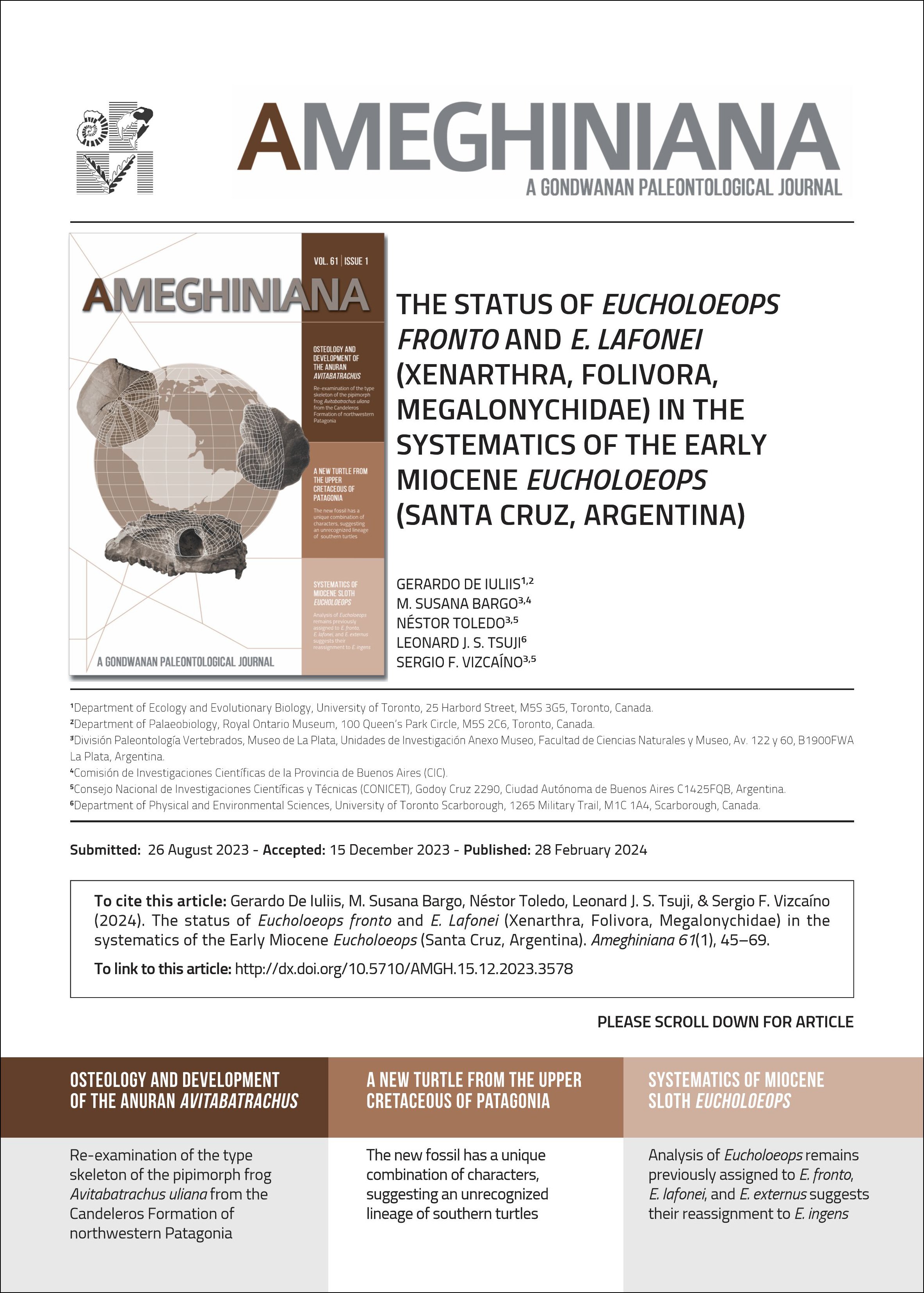THE STATUS OF EUCHOLOEOPS FRONTO AND E. LAFONEI (XENARTHRA, FOLIVORA, MEGALONYCHIDAE) IN THE SYSTEMATICS OF THE EARLY MIOCENE EUCHOLOEOPS (SANTA CRUZ, ARGENTINA)
DOI:
https://doi.org/10.5710/AMGH.15.12.2023.3578Keywords:
Sloths, Santacrucian, Patagonia, TaxonomyAbstract
This report is a continuation of the work published a decade ago on the status of specimens assigned in the literature and museum
records to the megalonychid sloth Eucholoeops from the early–middle Miocene Santa Cruz Formation (~ 18 to 15.6 Ma, Santacrucian Age) of Argentine Patagonia. This previous report concluded that several species (i.e., E. latirostris, E. externus, and E. curtus) are junior synonyms of E. ingens, but the authors were unable to analyze several other species and remains assigned to this genus. Here, analysis of these other species and remains suggest that E. fronto and E. lafonei are also junior synonyms of E. ingens. Included in the current report is a specimen recently recovered from the field of E. ingens that preserves, for the first time, an ectotympanic of Eucholoeops. In addition to the mainly cranial skeletal features analyzed here, consideration of postcranial remains indicate that the medial and lateral distal articular condyles of the femur are both contiguous with the patellar trochlea, in contrast to the previously reported condition of a separate lateral articular condyle in E. ingens. The authors further conclude that several features of E. latifrons suggest that this species is indeed distinct from E. ingens and that some specimens assigned in the literature to E. ingens cannot be so assigned with confidence.

Additional Files
Published
Issue
Section
License
Authors publishing in Ameghiniana have the option of making their article freely available online. Authors opting for the Open Access must pay a fee of $300 (US dollars) to cover article-processing costs and to ensure the article is made open access. Please contact the Production Team after the acceptance of your manuscript if you are interested in making your article Open Access. This option implies by default a license Creative Commons Attribution Non-Commercial-NoDerivs License (CC BY NC ND). If your funding institution requires a different licensing option please communicate this to the Production Team after the acceptance of your manusctipt.










